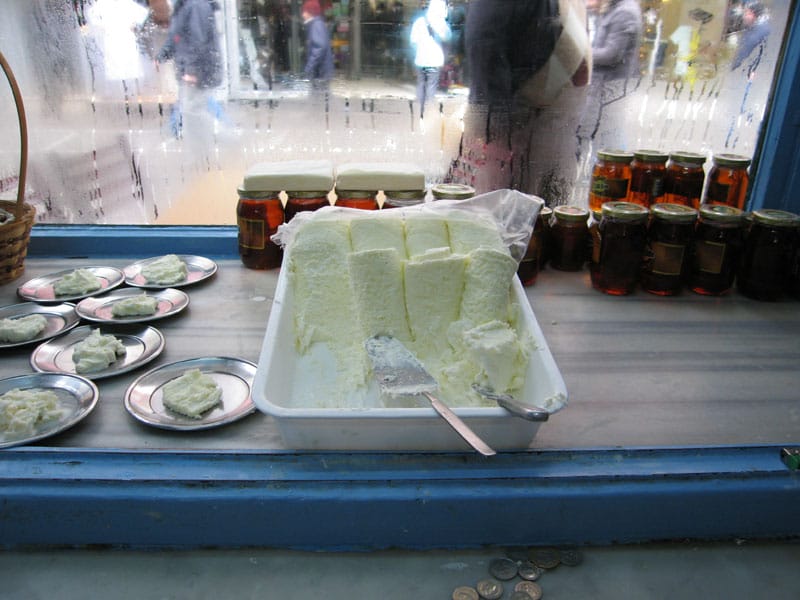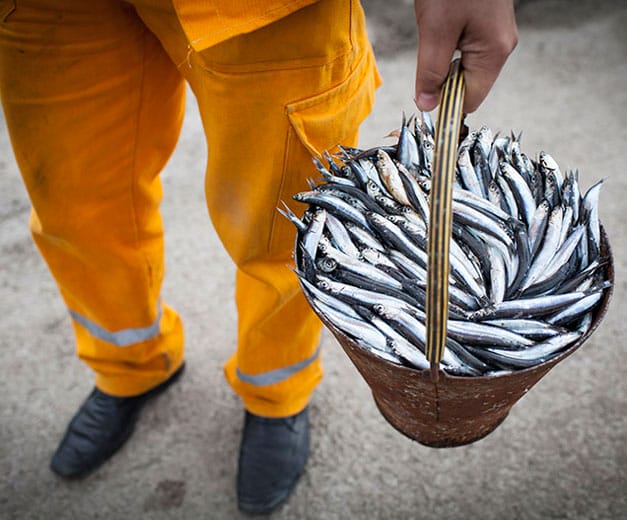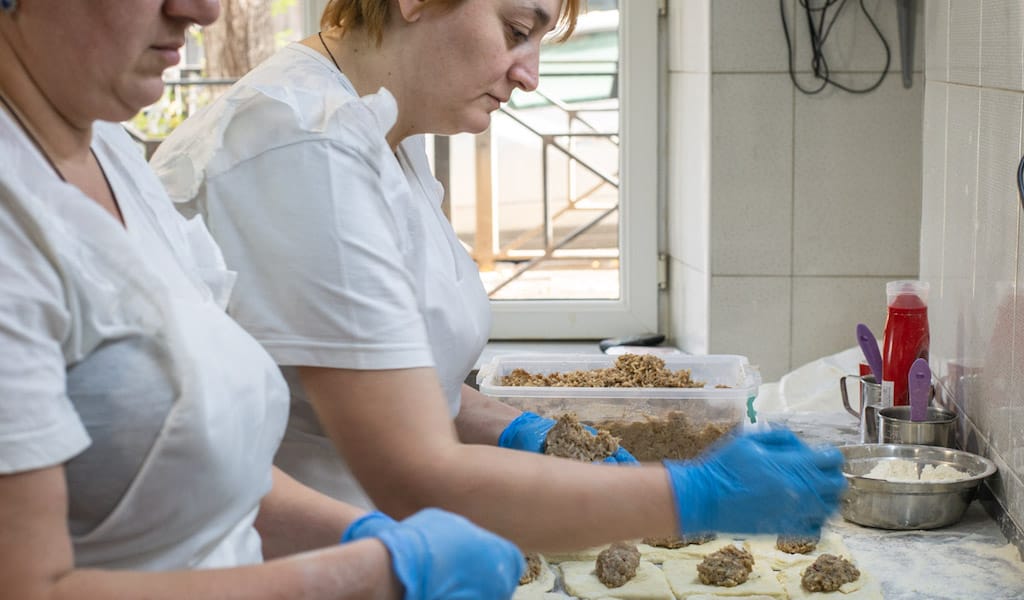Editor’s note: We are profoundly sad to report that Beşiktaş Kaymakçı has closed.
In our imagination, kaymak – the delicious Turkish version of clotted cream – is the only food served in heaven, where angels in white robes dish out plate after plate of the cloudlike stuff to the dearly departed, who no longer have to worry about cholesterol counts and visits to the cardiologist.
Perhaps we’re getting carried away, but kaymak can do that to you. For our money, the classic Turkish combo of kaymak served with honey and crusty white bread is one of the finest breakfasts anywhere.
The stuff is glorious, but simple. Milk – preferably from domesticated water buffaloes, known as “manda” in Turkish – is slowly boiled until a thick layer of very rich, pure, white cream forms at the top. After it cools, the kaymak is rolled up into little logs that have a consistency that hovers somewhere in between liquid and solid, with a creamy taste that’s both subtle and rich at the same time.
The stuff is also quite delicate, with a shelf life of barely one day. Still, purists refuse to refrigerate it, lest it lose its texture and pick up any refrigerator odors. Like we said, kaymak can make people get carried away.
Two of our favorite places to try kaymak are:
Beşiktaş Kaymakçı – This tiny shop/eatery has been in business since 1895, and it certainly shows its age. The marble counter is cracked and the paint on the walls peeling. But the kaymak, served up by the 84-year-old Pando, a living institution in Istanbul’s untouristed Beşiktaş bazaar, is out of this world. Prices here also seem unchanged since 1895: a plate of kaymak and honey, served with fresh bread and a glass of steaming hot milk, will set you back 4 lira.
Karaköy Özsüt – Compared to Pando in Beşiktaş, this place – open since 1915 – is a relative newcomer to the kaymak scene. Located on Istiklal Caddesi, Özsüt also serves up very good kaymak (as well as yogurt and rustic cheeses) made from the restaurant’s own herd of water buffaloes, whose pictures grace the walls.
 November 4, 2013 Hamsi
November 4, 2013 Hamsi
Update: Furreyya and Mohti Laz Meyhane are sadly no longer open.
As a chill sets in […] Posted in Istanbul May 15, 2023 Tartan
May 15, 2023 Tartan
You are motionless, stuck in a traffic jam after a long day at work while your stomach […] Posted in Tbilisi September 7, 2012 Indian Spices
September 7, 2012 Indian Spices
Update: Bollywood Restaurant and Jaipur Palace are sadly no longer open.
The […] Posted in Athens
Published on May 20, 2014
Related stories
November 4, 2013
IstanbulUpdate: Furreyya and Mohti Laz Meyhane are sadly no longer open. As a chill sets in and heavy clouds roll over Istanbul, turning the Bosphorus battleship gray, we say goodbye to the luscious strawberries and blood-red tomatoes in the market. Fall marks the start of hamsi season, a time when small anchovies fill the nets…
May 15, 2023
TbilisiYou are motionless, stuck in a traffic jam after a long day at work while your stomach growls. You know the rest of the family will be hungry when you get home and that the fridge is empty and sad. Shopping and cooking is out of the question, so you turn onto a Vera side…
September 7, 2012
AthensUpdate: Bollywood Restaurant and Jaipur Palace are sadly no longer open. The so-called “ethnic” cuisines – from Middle Eastern and Indian to Chinese and Japanese – came to Athens relatively late, in the mid-1980s, and were a costly affair. Athens’ first “exotic” restaurant, the Kona Kai in the Athens Ledra Mariott Hotel, opened its doors…
















































































